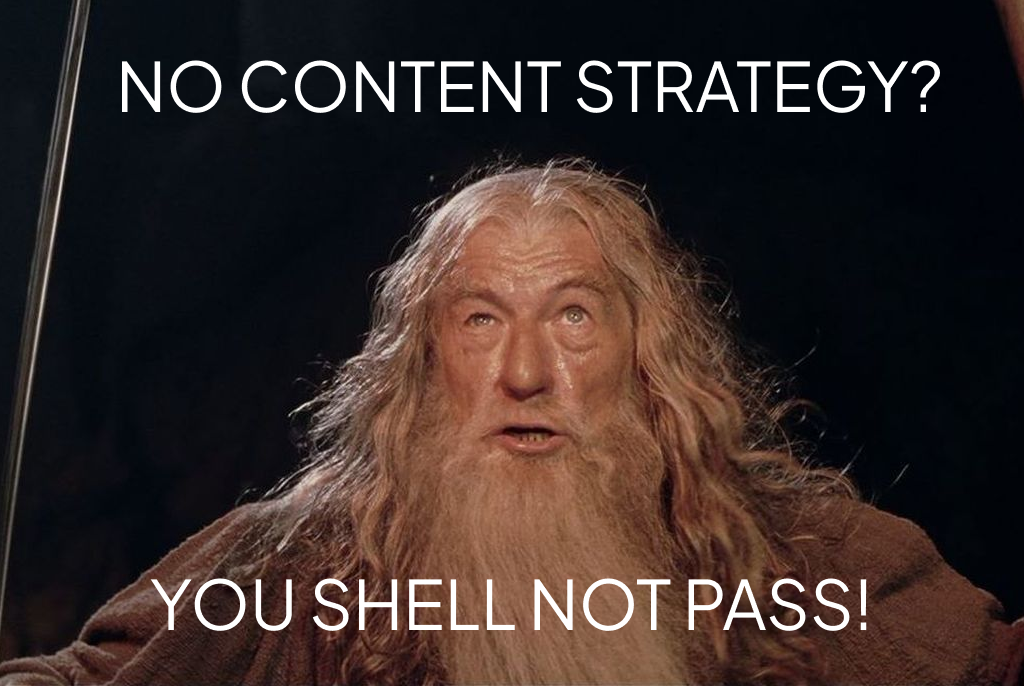May 14, 2025
In a world where everyone wants to stand out, sometimes being just normal and convenient is more beneficial than jumping out of your skin and trying to reach your target audience. And here’s exactly what keyword-rich content can help you with. But to work well, you should write it perfectly. How do you achieve it? Read further to learn!
What Is the Purpose of Keyword-Rich Content?
Oh, besides being a perfect long-tail keyword with high search volume and low difficulty that helps our website rank higher? Well, questions have half of the answers. In general, content on your website should be relevant, engaging, and, most importantly, helpful. Thus, in the best-case scenario, it will significantly boost your business by improving your website’s search rankings and leading to sacral leads.
How search engines rank content based on keywords
A slight digression is not about what it is but about how it works. Keyphrases are the skeleton of your page. By looking at them, special search engine robots can identify what this page is about.
Even if you have lovely pictures and graphs (and this is also important), the only thing engines see is text. So, when bots crawl your new blog post, you need to make sure you’ve read this article and use the best SEO practices to become the top 1 from the first crawl.

I Get It, I Need It. How Do I Write GOOD Keyword-Rich Content?
It would be great if writing content were easy. However, there is still a long way to go before AI can replace the experienced content writer and SEO specialist. So, it takes a lot more effort than just going to ChatGPT and pressing one button (we know, we tried).
The line is incredibly subtle with SEO-optimized content. You should place keyphrases, avoiding keyword stuffing, while making your article worth reading for your customers. Otherwise, instead of increasing organic traffic, you’ll get spammy content that potentially can damage your website’s reputation, resulting in Google penalization. Enough about sad things. Here’s your thorough guide to achieving 100/100 in good keyword-rich content writing.
Step 1: Research Your Target Audience and Main Competitors
In our case, unlike in the Bible, the word isn’t first. Your step one, or even zero, is thorough research. Imagine the exact person whom you (or your writers) are addressing. And start the dialogue. Is it male/female/they? How old are they? What questions can they possibly have? And, attention (!), what intent do they have?
- Informational – getting information, what is the difference between A and B?;
- Commercial – “do” category, customers know the product but aren’t sure what to do next;
- Navigational – visiting specific pages, like a branded online store or service page;
- Transactional – “buy” category, narrowing research, finalizing buying decision.
There are many ways to research your customers and create customer personas. These will help you later shape your content structure and select the perfect tone of voice for your message.
The same goes for your more successful competitors. Sometimes, you don’t need to reinvent the wheel. You can gather the information that is already available and ranks well. What also makes competitors’ research beneficial is that you can get technical insights with various SEO tools (we’ll talk about them later).
In content, everything matters, making keyword-rich articles the embodiment of the phrase “the whole is greater than the sum of its parts” – Aristotle misquote. So, when researching competitors, pay attention to even the tiniest details. You’ll never know for sure what helped them get to the top 5: content, backlinks, cross-linking, visuals, etc.
Step 2: Find the Right Keywords
Here is the part dedicated to the tools you can use to write SEO-friendly content. And, yes, ChatGPT can even be one of them! We don’t recommend using it for writing (aka farming posts), but it can be helpful for research, especially with the right prompt.
First of all, you shouldn’t forget that keywords are words or phrases that your customers type into search engines to find information. Consider them the real keys to humans’ hearts, thoughts, and intentions.
They help search engines understand your content and match it to relevant search queries. These facts lead us to the idea that our problem has at least three components: search engines, real customers who are just looking for the answer to their questions (aka user intent), and our content.
Our general solution is to befriend search engines and customers simultaneously, which can be a challenging task. With the first part, keyword research tools can help us. The most popular are:
- Ahrefs
- SEMrush
- Keyword Tool.io
- Google Keyword Planner
- Chrome extensions like SEO Pro and SEO Quake
However, each niche requires different levels of keyword research. In some cases, finding suitable keywords with little to no competition will be easy. Conversely, there are industries where you will have to sweat just to get to the end of the second page.

Types of keywords
When you know where to look for keywords and key phrases, you may want to learn more theory about them. And you won’t be disappointed. SEO is an ever-evolving field, so there’s always room for improvement. Here are the main types of keywords you want to know before tons of new ones appear:
- Short-tail keywords – broad, one- or two-word terms with high search volume but high competition (e.g., “SEO tips”);
- Long-tail keywords – more specific, multi-word phrases with lower search volume but higher conversion rates (e.g., “best SEO tips for small businesses”);
- LSI (Latent Semantic Indexing) keywords – related words and synonyms that help search engines understand the context (e.g., for “SEO,” LSI keywords could be “search engine optimization,” “Google rankings,” etc.).
Knowing your keywords and their synonyms isn’t even half the battle. In SEO-optimized content, everything matters, especially not only WHAT you place but also WHERE and HOW you place it. But more about this is in later chapters.
Step 3: Develop Content Structure and Content Plan to Avoid Bad Keyword-Optimized Content
This is the stage where all the pieces come together into one prosperous picture. We know that it can be hard to plan even for tomorrow, but one of the main features of a good content strategy is consistency. Thus, keep your content relevant and post articles at least once a week.
What else? You need to decide what type of content you want to add, not to overoptimize your website. Each page ideally should be keyword-optimized, especially in eCommerce. Here are the main page types you can add:
- Service page dedicated to the services you offer;
- Product page featuring the products you sell;
- Location page tailored to your services performed in the specific area;
- Blog posts to rank not only with transactional but also with informational KWs.
Write text clearly, knowing why you are doing it and for whom. Each type of content has its peculiarities, and if you have a clear goal, like answering a specific question and ending up in featured snippets, there is a 90% chance you will succeed. And it’s definitely better than writing watery, unclear text just to place it on the website.
Step 4: Implement It with the Best Keyword Placement Practices While Not Being Spammy
Finally, the “do” part. Now that you know all the basics of writing search-engine-optimized content, it’s time to post your masterpiece and do it right. How?
You may be surprised to learn that there are many things influencing content rankings from the backend. To strengthen your position at the top of Google, you should consider everything from schema to even the quantity of clicks leading to your target page to avoid high bounce rates.
Here’s your ultimate tips checklist that will help you make your keyword-rich content perfect:
- Use special tools to check your article before publication. It shouldn’t be too watery or keyword-stuffed to avoid high “nausea” ratings;
- Your content should be at least 80% and not AI-written. Google can deindex your page for that;
- Keep keyword density between 1-2%. Some niches require much higher density, but you can know it for sure from your competitors;
- Focus on high-quality content rather than forcing keywords;
- Use variations, synonyms and LSI keyphrases to maintain a natural flow while making content optimized;
- Write in a conversational tone and maintain the same tone of voice throughout the article;
- Use short sentences, paragraphs, ideally blockquotes, bullet points, etc, to enrich your pages’ markup.
Your goal is to make your content engaging, easily digestible, and enjoyable for your target audience. Your key phrases should be just there, organically fitting into the text, invisible to readers and transparent for search engines.

Step 5: Continuously Improve Your Keyword-Rich Content
As we mentioned earlier, in SEO, there are always plenty of opportunities for improvement. Even if you posted your perfectly written targeted keyword content and, for some reason, it didn’t get thousands of clicks and impressions in the first second, there are still some adjustments you can make:
- Check your inner links. Each content type has its maximum number of links. If you place too much, it will lose its relevance and so-called “SEO juice.”;
- Optimize anchor text. We advise you to use descriptive anchor text instead of generic phrases like “click here.” However, it should repeat your keyphrase over and over again as well;
- Write the original meta title and meta description. It’s a good practice to include the primary keyword naturally in them, as well as in the first 100 words, since search engines give more weight to keywords at the beginning of the content;
- Add or delete headings and subheadings. Their quantity usually depends on the industry, so sorry for such a vague recommendation. Just don’t forget to optimize them!;
- Edit image alt text and URLs. Yes, you can add your target keywords not only in headings and the content body but even in file names and alt attributes. It is a great practice, but again, you should be careful not to scare the Google algorithm with too many keywords.
Once you have researched, optimized, written and even adjusted your content, all you can do is just… wait. Unfortunately, there are no permanent solutions for SEO. You’ve done something -> You have to “let it dry” for at least a week -> Did it work? -> Yes -> Great! If the answer is no, just go back there and update your content, wait, check, repeat…
Google loves fresh, regularly updated content. So, you can always edit older articles, polishing them according to the new keywords and trends. What’s more, tools like Google Search Console collect performance data and can give you valuable insights on further keyword-rich content development.
Conclusion
Writing keyword-rich content is challenging even for experienced SEO copywriters. Website content should be well-versed to suit the needs of search engine bots and your prospective customers. Plus, Google regularly releases updates, so further content improvement with each update also plays a big part. Unfortunately, it’s not something you can learn in an evening by reading an article (even if it’s a good one like ours).
Luckily, you can leave this thankless job to the Just Web Agency professionals. Our content is SEO-optimized from the very beginning to bring you peace of mind that your brand is valued and seen by those who are interested in it, and get you scalable traffic.
Keyword-Rich Content FAQ
How many keywords should I use in an article?
Unfortunately, we can’t tell you the exact numbers. Keyword density in your article depends on what niche you’re writing for, how strong your competitors are, how long your article is, etc.
Keep the overall density at low levels, 1-2%, and use one primary keyword and a few related keywords naturally. Please avoid keyword stuffing and overoptimizing your content, as they can lead to Google penalization.
How often should I update keyword-rich content?
If your article is in Google snippet or has been in first place for at least three months, we can only congratulate you. Editing it in any way would be very risky since it has already performed well. For the articles and pages that are less lucky, review and update content of necessity approximately every 6-12 months to keep it relevant.
Can I use the exact keywords on multiple pages?
Yes, but there’s a high chance of keyword cannibalization. This occurs when multiple pages compete for the same keyword. In that case, keep the page that performs better and edit the second one, using synonyms and LSI keyphrases to match users’ intent better.




